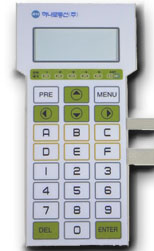Membrane Switches & Switch Assemblies
|
A Membrane Switch is a momentary switch
device in which at least one contact is on, or made of, a flexible substrate. They offer a low cost and high reliability compared to other switch technologies.
Membrane switch panels give total freedom to the designer. Being light in weight and thin in construction , this ultra reliable technology has already been adopted by many industry sectors for product use in a variety of environments.
|
 |
Additional Information: |
|||||||||
|
Membrane Switch Options: |
|
||||||||||
|
|||||||||||
|
All of the following conditions or features must be met in order to be classified as a membrane switch: 1. Direct (Ohmic) Contact: the poles of the switch must make physical contact, i.e. can not be non-contact type like capacitive, ferrite core, or hall effect. 2. Momentary Action: Upon release, the poles immediately separate as the flexing membrane returns to its original position. 3. Low Voltage Application: A membrane switch is designed to be used in low voltage, DC logic-level-signal, applications. 4. Membrane Layer: A thin pliable layer that carries one pole, both poles or that flexes during switch operation used to short both switch poles together. 5. Static (Insulating) Layer: Does not flex during switch operation but carries one pole, both poles or used to short both switch poles together. See figures 1. There are two basic construction techniques:
Our " Membrane Switch Materials" page explains some of the material options available when ordering a membrane switch.
|
|||||||||||
|
Click on the Speed Quote link on the left to request a quote for a membrane keypad. |

